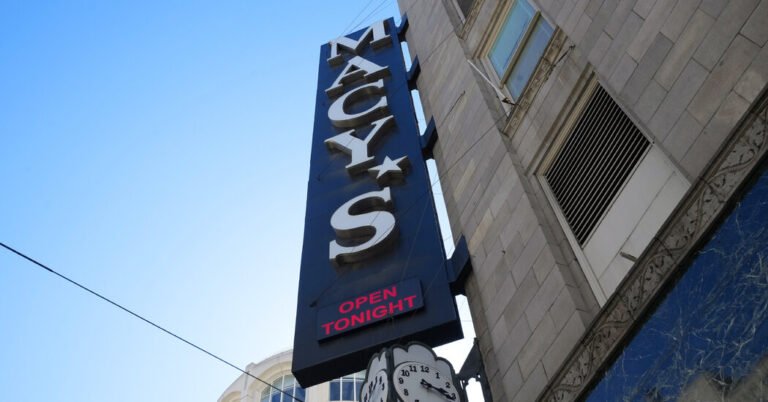
The Numbers: Macy’s lags while Bloomingdale’s and Bluemercury grow.
Macy’s said its comparable-store sales in the United States fell 1.2 percent from the same quarter a year earlier. The retailer has not reported a sales increase since the first quarter of 2022. It reported a first-quarter profit of $62 million, less than half of what it made in the same quarter last year.
Sales at the namesake Macy’s brand were the weakest of all of the company’s brands, falling 1.6 percent. Sales at Bloomingdale’s rose 0.8 percent and Bluemercury’s sales rose 4.3 percent.
Macy’s has been trying to improve the shopping experience at their stores. The company has added more staff to assist shoppers around the dressing rooms and remodeled some locations.
According to the Census Bureau, retail sales at department stores overall fell 2.4 in the first four months of the year, compared with the same period last year.
While Macy’s has struggled, other retailers that also mostly sell clothes, beauty products and home décor have continued to draw customers, including TJX, the owner of T.J. Maxx and HomeGoods, which will give investors a look at its earnings on Wednesday.
Macy’s slightly raised the low end of its guidance to $22.3 billion in net sales for the year, up from $22.2 billion it expected in February. The department store chain said it expected comparable-store sales to be down about 1 percent to 1.5 percent compared with last year. It bumped up its earnings forecast a bit.
What Happens Next: Looking for signs that an overhaul is paying off.
Macy’s is undergoing a major overhaul, which includes closing 150 stores over the next three years. After the downsizing, Macy’s expects to have 350 stores, just over half the number it had before the pandemic.
The retailer has said 50 stores would close by the end of this fiscal year. One of those may be in San Francisco’s Union Square. City officials there are trying to persuade the retailer’s executives to change their mind, one San Francisco official told a local TV station last month.
Tony Spring, who became Macy’s chief executive in February, is overseeing the restructuring. Macy’s has started to make a distinction between the stores it plans to keep and the ones it is closing. In the first quarter, it said that 50 stores that represent the company’s future, based on geography, staffing and other factors, saw a comparable sales increase of 3.3 percent.
In a statement on Tuesday, Mr. Spring said the performance at those stores was a “leading indicator” for what the remaining fleet would look like after the store closures.
“Although early days, our investments in product, presentation and experience are gaining traction and reinforce our belief that longer-term Macy’s Inc. can return to sustainable, profitable growth,” he said.
Mr. Spring is also dealing with pressure from an activist investor group that believes the company is not doing enough to turn its business around. In December, the group offered to buy Macy’s and take it private, which the retailer rebuffed. In March, the group raised its bid and valued the company at $6.6 billion, a premium to the company’s current market value.
Macy’s board said it would review the proposal. Last month, Macy’s appointed two independent directors proposed by the activists as part of a deal to avoid a broader proxy battle.